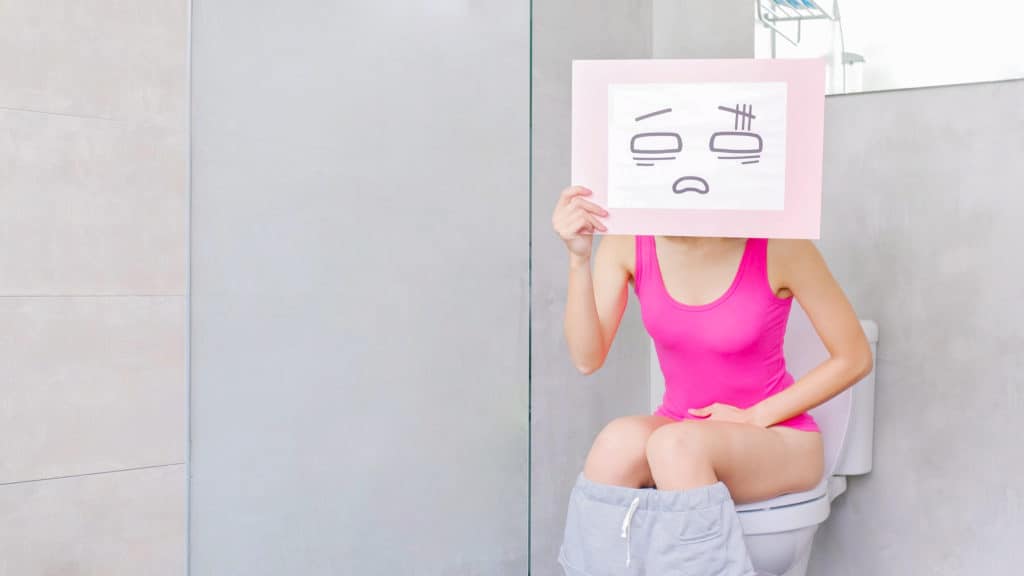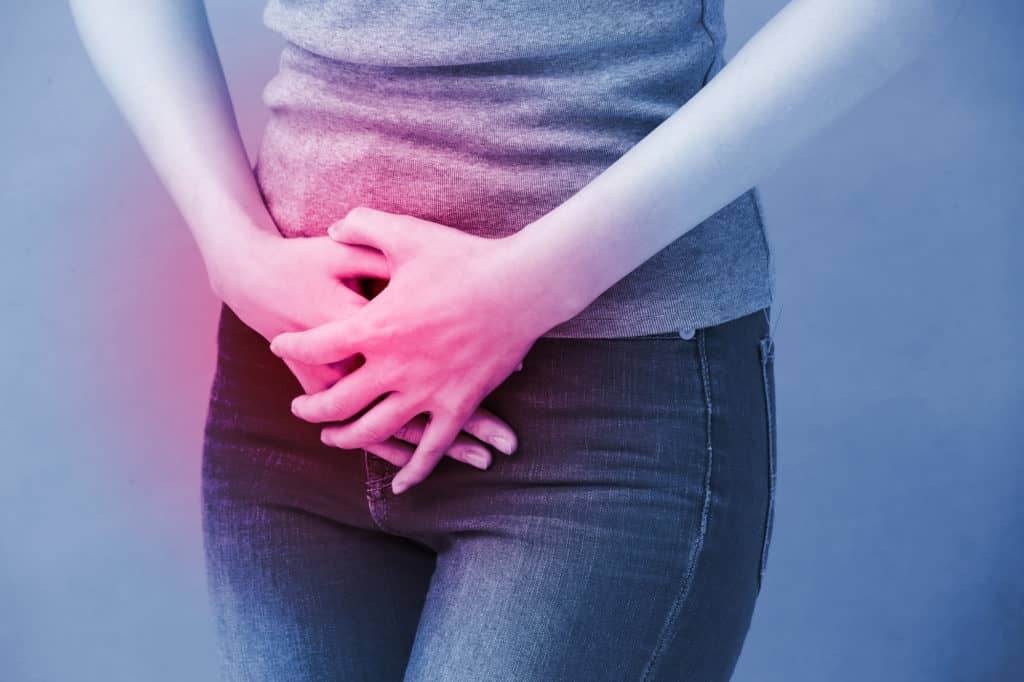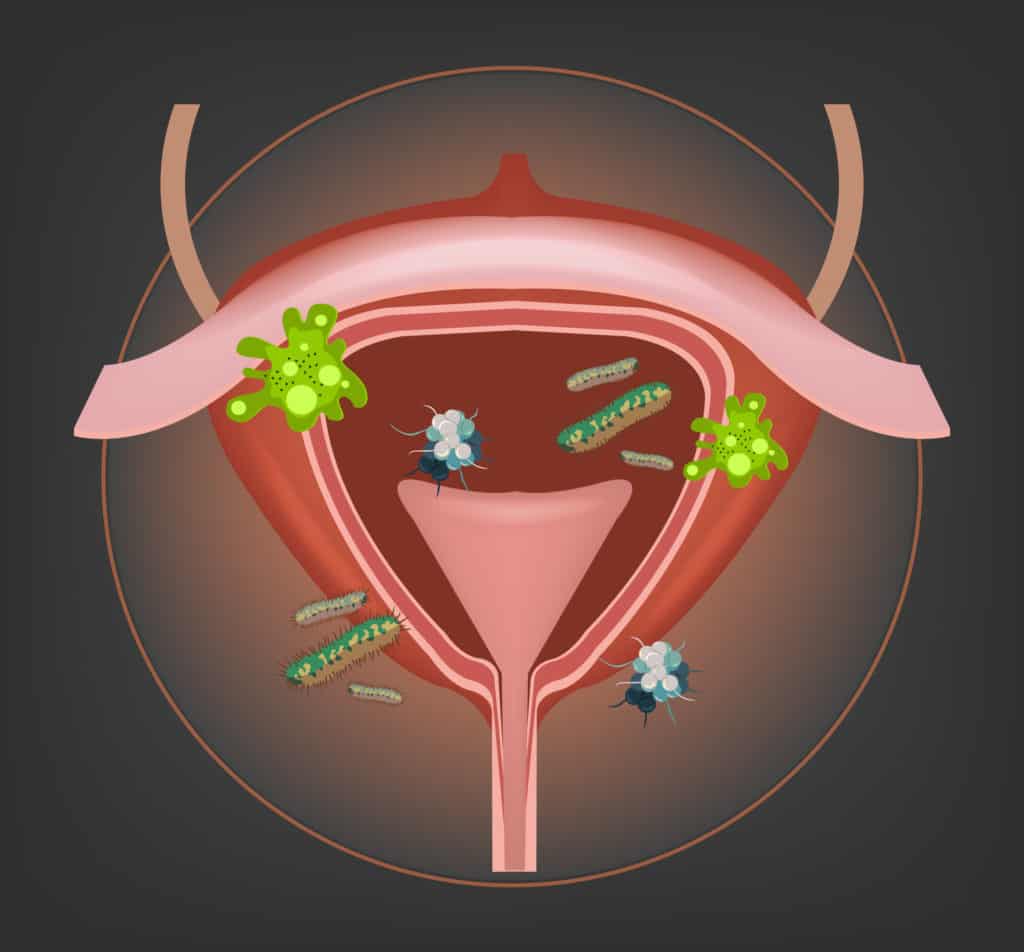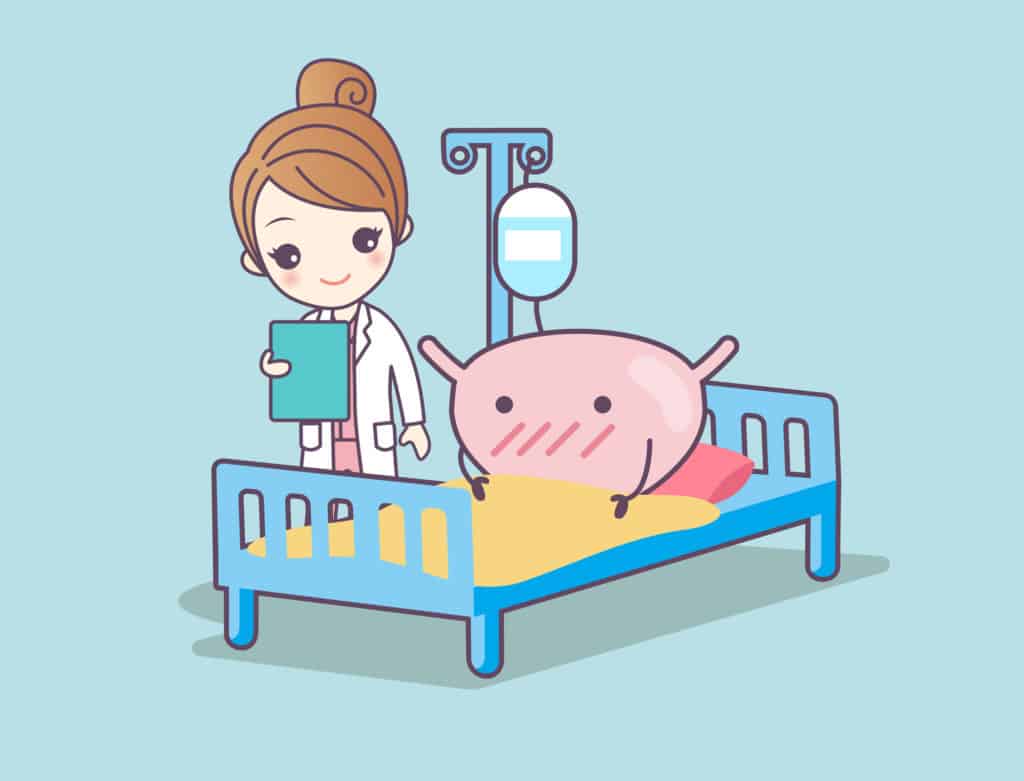Painful Bladder Syndrome. Can it go away?
It’s the million-dollar question. It feels like it’ll never go away.
But we have good news.
If you have Painful Bladder Syndrome, you know how it feels to lay in bed night after night, desperate to get a good night’s sleep—dreading another, painful, sleep-deprived day. Before the tell-tale pressure and pain in your pelvic area arrives like clockwork.
Along with the pain comes the relentless urge to pee every 15 minutes, making it impossible to fall asleep and stay asleep for longer than light, 30-minute intervals.
“Why is it always worse at night – right when I want to sleep?”
Deep restorative sleep is something you only dream about…
(If you could get to sleep. Right?)
It’s endless. You have the odd, good day where symptoms are minimal, and you only have to pee like 59 times during the day and 25 times during the night. But then it’s back with a bang, and you’re back and forwards to the toilet over 100 times every 24 hours.
A total of 6-8 times per day is considered “normal”. Let that sink in.
We’re making light of it here, of course, but it isn’t funny at all. Sadly, for many of the women we see in our clinic, those numbers are pretty accurate. No exaggeration. They spend more hours sitting on the toilet than they do anything else, and the rest of the time, they’re thinking about whether they need to go to the bathroom.
Nothing gets done.
Emails go unanswered.
The to-do list remains unchecked – you can’t focus.
Date night is canceled – you’re too tired.
Sex is off the cards for the foreseeable future – it’s too painful.
Sleep deprivation makes everything worse.
It’s hard not to get depressed. We get it.
The worse thing is that it goes on for so long that you become used to it. The pain. The pressure. The relentless trips to the toilet. There is no escape.
Instead, you make allowances. Cancel plans. Stop doing all the things that flare up your symptoms – like sex and working out. You request dinner tables near the ladies’ room, and that’s if you even go out at all. It’s your painful new normal. So much so that you hardly remember what life was like before – and it’s hard to imagine that it’s possible not to have to live with these annoying symptoms.
Does that sound like you?
What Is Painful Bladder Syndrome?
When you have Painful Bladder Syndrome or Interstitial Cystitis, as it’s sometimes called, your bladder is angry and irritated – which is ironic because that’s how most sufferers feel.
Symptom-wise, you might feel pain, pressure, or need to pee more frequently – or, in most cases, a combination of all three. It is a chronic condition that MD’s diagnose when you experience the symptoms for six weeks or more.
You might have pain all the time, or it might be intermittent. In some women, it gets worse during certain times of their cycle or flares up in response to stress, sex, or exercise.
Symptoms vary from woman to woman, but it’s worth considering that you may have Painful Bladder Syndrome if you have one or more of the following symptoms:
- Pelvic pain lasting for more than six weeks
- Pain in the spot between your vagina and your back passage
- Pain or discomfort during penetrative sex
- A persistent and recurrent urge to pee more often than usual
- Passing small amounts of urine multiple times per day
- You feel pressure or pain when the bladder is full and alleviation when urinating
Unlike regular cystitis caused by a urinary tract infection, Interstitial Cystitis and Painful Bladder Syndrome don’t involve bacterial infections. They have some of the same symptoms as ordinary cystitis – except most women who have Painful Bladder Syndrome don’t get the “peeing broken glass” feeling.
So, if you feel like you have a urinary tract infection but antibiotics aren’t helping, this can be a clue to discovering that the root cause of your pelvic problems isn’t an infection. In this case, your symptoms are more likely Interstitial Cystitis or Painful Bladder Syndrome.
What Causes Painful Bladder Syndrome?
We don’t know what causes Painful Bladder Syndrome. Even though we can treat it and improve symptoms, the cause is still a bit of a mystery to the medical and scientific research communities. But it is theorized to be associated with the following medical presentations:
- An Autoimmune Condition – where the body’s immune system attacks its own cells, in this case in the bladder.
- An allergic reaction – where mast cells release histamine and cause inflammation.
- Weak pelvic floor muscles – the muscles that control peeing.
- Damage or scarring in the lining of the bladder or the surrounding muscles and nerves.
It is also commonly diagnosed alongside, and considered by some, as a symptom of the following systemic conditions:
- Irritable Bowel Syndrome (IBS)
- Fibromyalgia
- Lupus
- Chronic Fatigue Syndrome (CFS)
Most of these conditions present with widespread pain all over the body – and bladder pain and more generalized pelvic pain is often present.
But even though there isn’t an exact cause of Interstitial Cystitis and Painful Bladder Syndrome, it most definitely isn’t in your head. The pain, pressure, and need to urinate are all genuine, as is the emotional distress – and it can be debilitating.
However, don’t panic. You are not alone. We’re here to support you.
How To Treat Painful Bladder Syndrome
Well-meaning friends and relatives tell you to relax and stop worrying. They haven’t experienced the same severity of symptoms (If they had, they’d probably take it a little less lightly, that’s for sure). Or they tell you to quit caffeine – because they read online that it’s a diuretic, so that must be the problem.
They now consider themselves qualified to offer medical advice. This advice is well-intended but not helpful because Painful Bladder Syndrome and Interstitial Cystitis are much more complex than just drinking too much coffee. If it were that simple, there wouldn’t be 12 million Americans who suffer from it.
The good news is that Painful Bladder Syndrome does go away. Although we’re not sure what causes Painful Bladder Syndrome, there are lots of things you can do to reduce the severity of symptoms and get your life back.
There is some evidence suggesting the supplement D-Mannose, a simple sugar molecule isolated from cranberries and other fruits, can help conditions involving the bladder and urinary tract. But there is more compelling evidence to support its use in bacterial cystitis caused by E.coli, which accounts for 90% of UTI cases. It’s unlikely to offer much help with Painful Bladder Syndrome and Interstitial Cystitis.
Lifestyle changes – designed to reduce systemic inflammation – like staying hydrated, walking and exercising gently, and eating a healthy, anti-inflammatory diet, with lots of fruit and vegetables can help reduce the severity of symptoms. Some studies suggest avoiding citrus fruit, pineapple, kiwi and strawberries and chilies, pickles, sauerkraut, tomatoes, and onions.
The Interstitial Cystitis Network has a Food List that may help. But diet is quite individual, so it’s best to try and work out what triggers your specific symptoms rather than relying on a generic list.
Exercise is important, too. Stiffness and muscle tightness may make your symptoms worse. Even though you might not feel like it, it’s a good idea to stay active and keep your body moving to get blood and lymphatic fluid flowing to and from your pelvic area.
Try Yoga or Pilates to gently stretch out the muscles in and around your hips and pelvis. But if anything makes your symptoms worse, stop and change it up. The “no pain, no gain” mantra is not applicable here.
Meditation and some forms of mindfulness can be helpful for chronic pain conditions too. You don’t have to be experienced, either. Just 10 minutes per day can help considerably. There are lots of apps, like Headspace or Sam Harris’ Waking Up, that can help you cultivate this habit.
But aside from the physical symptoms, Painful Bladder Syndrome is a challenging condition to endure. You need support.
I Can Help You With Painful Bladder Syndrome
It may not surprise you to hear that our #1 recommendation to treat Painful Bladder Syndrome is to consult with a Physical Therapist.
At Nancy Branberg Physical Therapy, we help women struggling with pelvic pain and Painful Bladder Syndrome to shift their attention and energy to do all the things they love to do.
We help you work out what causes your symptoms to flare up. Work with you to find different ways to exercise or have sex and treat any underlying issues that may be exacerbating your symptoms. Help you to strengthen your all-important pelvic floor muscles and perform soft tissue rehab to improve your symptoms.
To find out more about how we help women with Painful Bladder Syndrome, book your free call here – or apply for a 30-minute taster session at our Falls Church clinic.
If Physical Therapy is not an option for you at the moment, you can download our Free Bladder Pain Guide to help you understand the condition.







